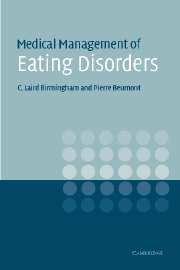Book contents
- Frontmatter
- Contents
- List of color plates
- List of contributors
- List of abbreviations
- Introduction
- PART I THE MEDICAL PERSPECTIVE
- 1 Definitions and epidemiology
- 2 The behavioral disorders
- 3 History, examination, and investigations
- 4 Medical manifestations by system
- 5 The clinician's response to common physical complaints
- PART II TREATMENT
- PART III SPECIAL ISSUES
- PART IV THE PSYCHIATRIC AND PSYCHOLOGICAL PERSPECTIVE
- PART V AREAS OF SPECIAL INTEREST
- Bibliography
- Index
- Plate section
2 - The behavioral disorders
Published online by Cambridge University Press: 18 December 2009
- Frontmatter
- Contents
- List of color plates
- List of contributors
- List of abbreviations
- Introduction
- PART I THE MEDICAL PERSPECTIVE
- 1 Definitions and epidemiology
- 2 The behavioral disorders
- 3 History, examination, and investigations
- 4 Medical manifestations by system
- 5 The clinician's response to common physical complaints
- PART II TREATMENT
- PART III SPECIAL ISSUES
- PART IV THE PSYCHIATRIC AND PSYCHOLOGICAL PERSPECTIVE
- PART V AREAS OF SPECIAL INTEREST
- Bibliography
- Index
- Plate section
Summary
Dieting (restricting) and purging forms of anorexia nervosa
The diagnostic criteria that have been prescribed for AN and the other eating disorders have varied only slightly over the years, and the present form (see Tables 1.3–1.6) is essentially similar to when the disorders were first described. It is important to stress that these descriptions are simply lists of symptoms and signs that are commonly associated and that point to a similarity of course of others. They are not true definitions of an illness entity as is found in many instances elsewhere in medicine, i.e. an explanatory portrayal of etiological factors, pathology and physiopathology, derived manifestations, and a course of progression. Instead, they merely note physical, psychological, and behavioral features without a clear appreciation of their interrelationship. The most characteristic of the features of an eating disorder are the behavioral disturbances that the patient displays; it is these features that will be described here.
Anorexic behaviors, although all directed at either decreasing energy intake or increasing energy expenditure, are not uniform (Table 2.1). Some patients employ only the restrictive behaviors commonly associated with “normal” dieting, such as undereating, refusal of high-energy foods, and strenuous exercise. This is the “dieting” or “restricting” form of the illness; these patients differ from normal mainly in the extent of these behaviors and their inability to desist. Other patients also use vomiting and laxative or diuretic abuse. The presentation, then, is of the “purging” form of AN.
- Type
- Chapter
- Information
- Medical Management of Eating DisordersA Practical Handbook for Healthcare Professionals, pp. 19 - 23Publisher: Cambridge University PressPrint publication year: 2004



